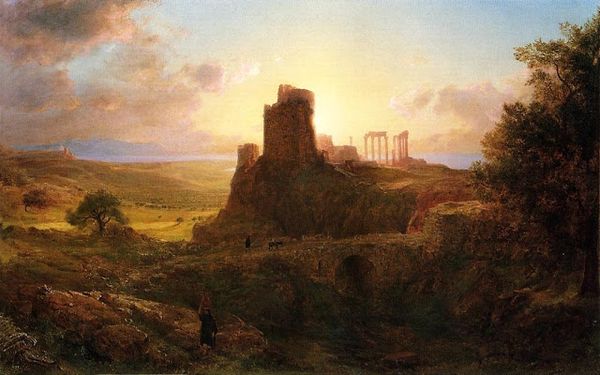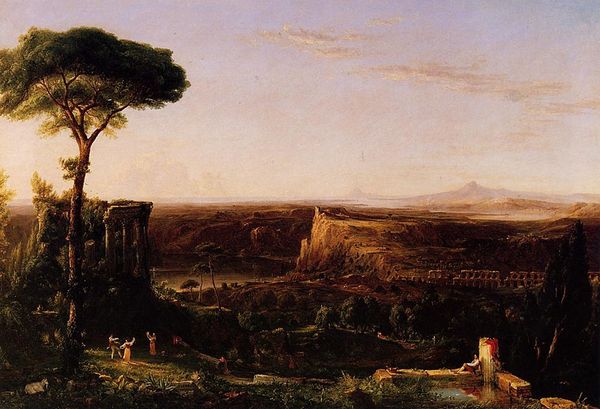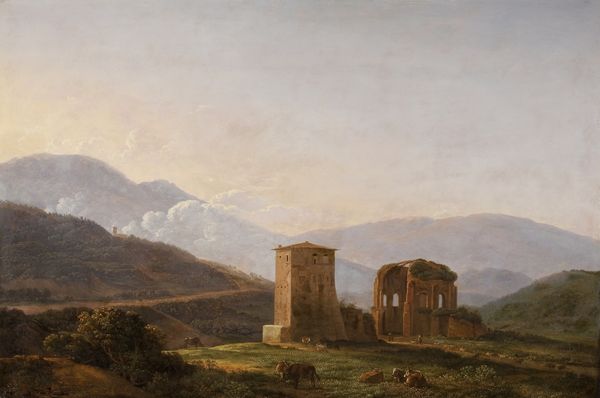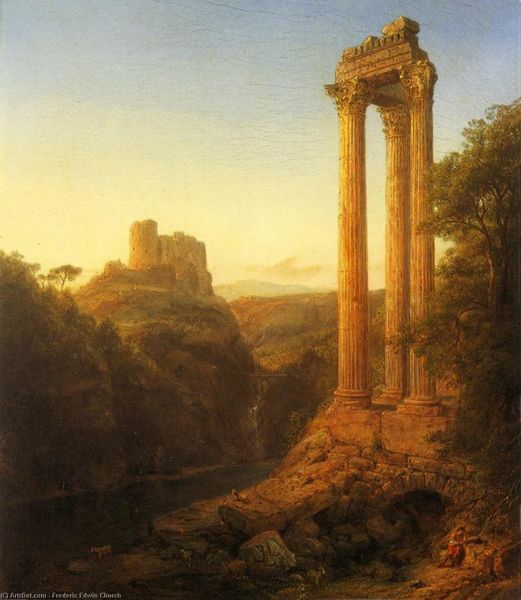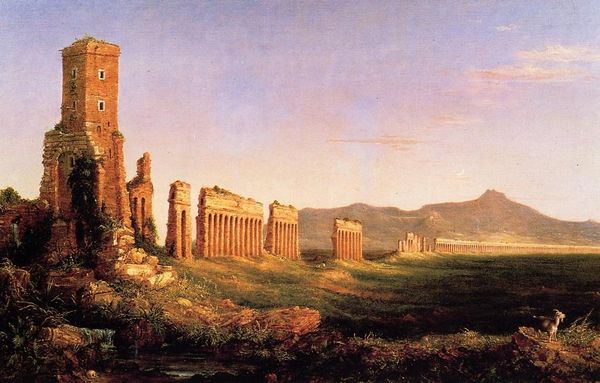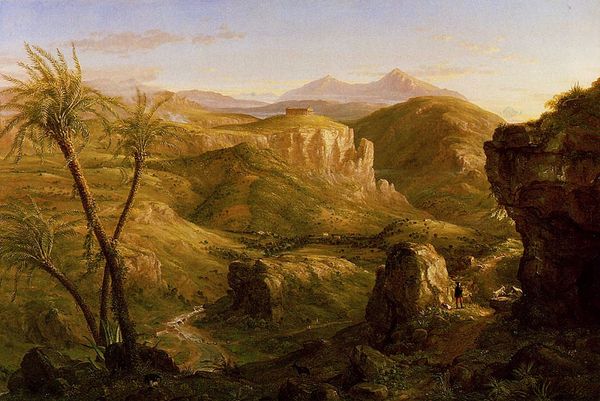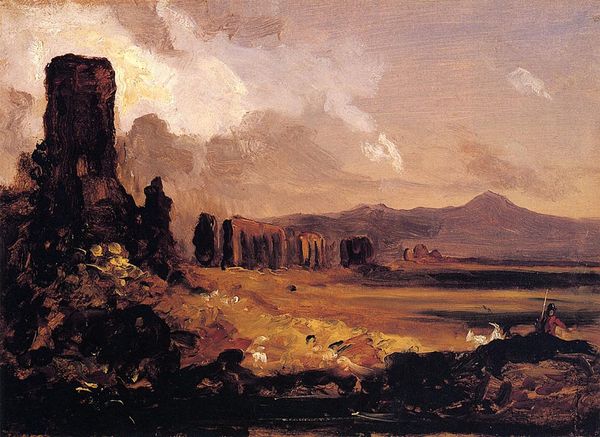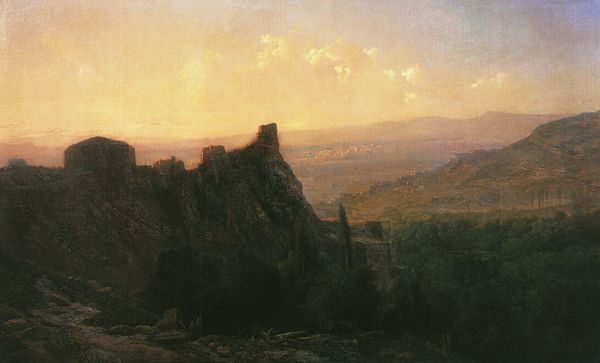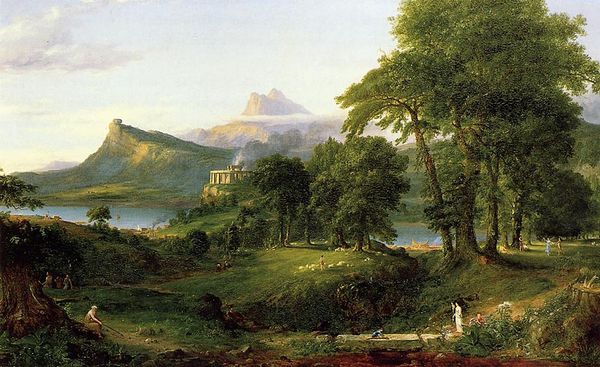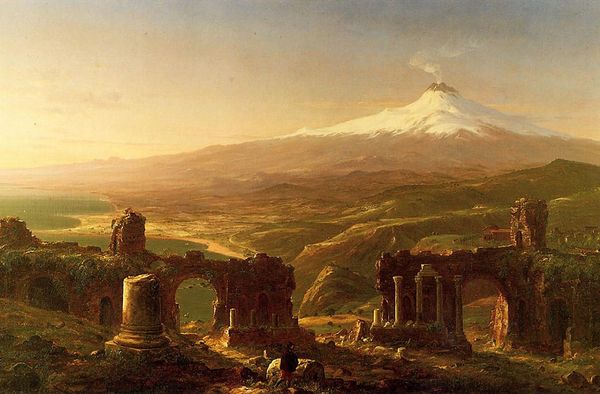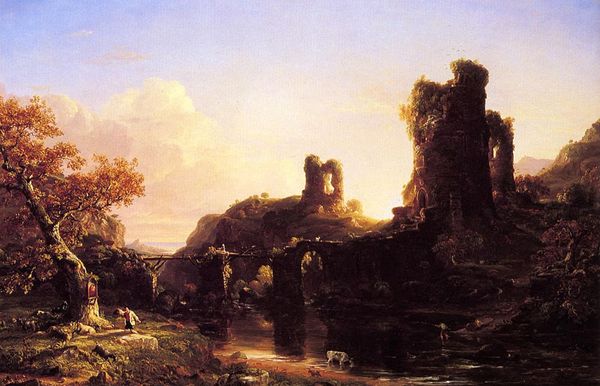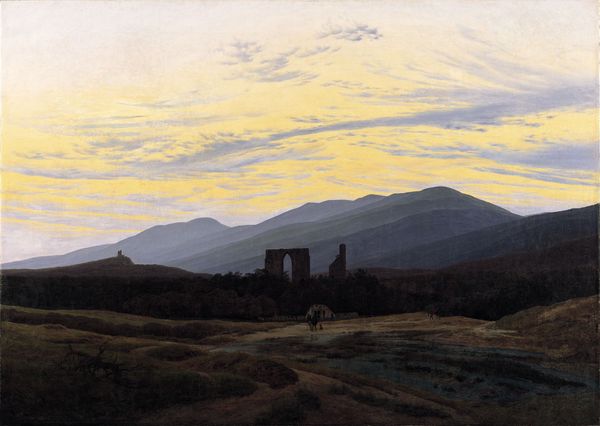
painting, oil-paint
#
sky
#
painting
#
oil-paint
#
landscape
#
form
#
column
#
romanticism
#
abstraction
#
line
#
cityscape
#
history-painting
#
nature
#
realism
Copyright: Public domain
Thomas Cole’s "Roman Campagna," held at the Wadsworth Atheneum, presents a serene yet melancholic landscape painted with oil. Dominating the scene are the ruins of Roman structures, rendered in warm earthy tones, which evoke a sense of historical grandeur touched by decay. The soft, diffused light of the setting sun bathes the composition in a golden hue, fostering a contemplative mood. Cole uses the visual language of ruin to explore themes of time and transience. The crumbling architecture serves as a sign of the inevitable decline of civilizations, a popular Romantic theme. The sublime is evident in the vastness of the landscape, contrasting with the fragility of human achievement. Compositionally, the ruins are strategically placed to guide the viewer's eye across the canvas, creating a dialogue between past and present, nature and civilization. The brushstrokes are smooth and blended, enhancing the idyllic yet somber atmosphere. Cole destabilizes the conventional heroic landscape by embedding a meditation on the cyclical nature of history within its visual structure. The "Roman Campagna" is not just a picturesque scene but a profound reflection on historical narrative and the ephemerality of human endeavor.
Comments
No comments
Be the first to comment and join the conversation on the ultimate creative platform.
